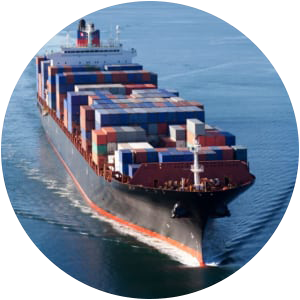Editor’s Note: This article by Lee Swindall first appeared in Business Facilities Magazine on June 16, 2016. Read the full article on Business Facilities’ website.
As tempting as it is to measure the effects of economic development investments solely in terms of direct, short-term job creation, professionals in the field are increasingly focusing on the potential long-term, indirect benefits of their business and talent development strategies. In Wisconsin, these strategies include industry cluster development rooted in unique technical knowledge and specialized supply-chain strengths. Fueling the movement is a commitment among public and private sector participants to increase the state’s competitive advantage through collaboration.
From water technology and food processing to energy, power and control, companies in Wisconsin that recognize their mutual dependency and have formed partnerships to address common challenges are thriving and creating new economic opportunities, most often with the leadership of a strong industry organization and full engagement from the state’s academic leaders.
Water Technology
More than 200 companies with ties to the water industry call Wisconsin home, employing over 37,000 people and generating $5.7 billion in annual sales. What’s the driving factor behind Wisconsin’s rise as the world water hub? A highly integrated water technology industry cluster – led by The Water Council, a Milwaukee-based global authority on advanced water technology development and deployment made up of public, private and academic stakeholders.
The Water Council fosters economic opportunities for Wisconsin’s water industry participants by building strategic partnerships, supporting education and facilitating access to capital investment. The organization’s work has drawn international praise and attention for its leadership in industry cluster collaboration.
In 2013, the International Economic Development Council presented The Water Council the Public-Private Partnership Award for its collaboration with WEDC for best practices in the creation of Milwaukee’s Global Water Center — a 98,000-square-foot facility, which houses water-centric research opportunities for universities, existing water-related companies and accelerator space for new, emerging water technology companies. Since then, the building has seen rapid fulfillment, leading to the development of Global Water Center II to advance water industry cluster development and innovation above and beyond its current assets.
This industry cluster collaboration among city and statewide stakeholders has led to expansive growth in this area of Milwaukee, which is also known as the Water Technology District. Since 2012, the area has spurred more than $200 million worth of development. In a recent European Union workshop on clusters, experts from Harvard Business School, MIT and the U.S. Department of Commerce discussed the success and impact of this economic cluster with Dean Amhaus, president and CEO of The Water Council. The panel also announced it would begin a comprehensive study of Wisconsin’s water cluster to learn from its achievements and model it for future cluster building, both in the U.S. and in Europe.
Underscoring the remarkable impact the organization has had both on the water technology industry in Wisconsin and on the revitalization of downtown Milwaukee, The Water Council was recently awarded CoreNet Global’s 2016 Economic Development Leadership Award for Water Technology Cluster Leadership.
Energy, Power and Control
In addition to its international leadership in water technology, Wisconsin is a global center for energy, power and control – uniquely leveraging market-leading industrial capabilities, advanced academic research and specialized institutions. Wisconsin’s core competency in this industry cluster is reflected in the more than 900 companies in the state that employ over 100,000 people and generate $38 billion in annual sales. Notably, this sector registered 27 percent growth in Wisconsin from 2006 to 2012, during which period the nation’s economy as a whole was mired in recession.
Helping lead the industry sector in Wisconsin is the Midwest Energy Research Consortium (M-WERC), a consortium of businesses and institutions throughout eight Midwestern states. Similar to The Water Council, M-WERC helps connect industry representatives with research resources within Wisconsin’s university systems, and is a regional model for energy collaboration throughout the U.S. Both leaders in their respective industries, M-WERC and The Water Council recently announced a joint project to leverage the region’s assets to address challenges of the Energy-Water Nexus (EWN).
The development of an EWN roadmap is one of the first projects M-WERC and The Water Council will tackle. This roadmap will explore the market and the region’s capabilities to supply various technologies that work to eliminate energy’s dependence on water and vice versa. The goal is to identify opportunities to create water and energy savings.
Also, similar to the water technology industry, public-private partnerships in Wisconsin’s energy, power and control industry bring together educational institutions, industry participants and government agencies to create a collaborative model that draws upon some of the world’s leading industry experts. Through organizations such as M-WERC, companies can tap this expertise for innovative, cost-effective and efficient energy solutions.
For example, M-WERC’s Energy Innovation Center brings together entrepreneurs, researchers, scientists, engineers and business leaders to conduct joint-research, jump-start new technologies and transition prototype products to commercialization. The center plays a critical role in advancing the energy, power and control industry cluster.
Along with M-WERC and the Energy Innovation Center, Wisconsin is home to the Wisconsin Energy Institute (WEI), which spurs research, training and technology at the University of Wisconsin-Madison. WEI is committed to developing a cleaner, more sustainable energy portfolio that can advance economic growth for the state and the nation, and to creating real-world innovations that offer new competitive advantages and products for a wide range of Wisconsin industries.
Food and Beverage
More than 1,400 food and beverage processing companies are located in Wisconsin. The Milwaukee region alone is home to more than 253 food and beverage manufacturers that employ nearly 15,000 workers, with $590 million in annual payroll. Southeastern Wisconsin hosts operational facilities for some of the largest food companies in the world, including ADM Cocoa, Cargill, Coca-Cola, SABMiller, Nestle and Pepsi.
FaB Wisconsin, the state’s food and beverage industry cluster organization, helps bring together key stakeholders to spur the industry’s growth. With a focus on food, beverage, ingredient, equipment and packaging makers, the organization works to raise industry awareness and capacity for growth and advancement, from farm to factory to fork. Whether looking to attract talent, accelerate innovation, ensure food safety, start up or grow, food and beverage businesses benefit from connecting with FaB Wisconsin.
Aerospace
With more than 140 manufacturers in the state supplying precision products to Boeing, Wisconsin has also distinguished itself as a reliable source of components and expertise in the aerospace subsector.
Wisconsin ranks second nationwide in manufacturing employment concentration, and it has the highest employment concentration of any U.S. state in two industries on which aerospace depends – fabricated metal product manufacturing, and electrical equipment, appliance and component manufacturing. It also has high concentrations in machinery manufacturing, plastics and rubber products manufacturing, and primary metal manufacturing.
These manufacturers are committed to producing high-quality, precise parts, and are focused on gaining the necessary certifications such as AS 9100 Rev C, ISO 9001, NADCAP and ITAR. Since the history of each part is so well documented in Wisconsin, the end assembly site is able to ascertain exactly where every critical part was made. In aviation, an industry where there is zero room for parts that don’t meet specifications, Wisconsin is an important fixture of the supply chain.
Fueling Wisconsin’s ascension as a leader in aviation and aerospace innovation are its world-class university and technical college systems. Engineering and research programs throughout the universities statewide, including UW-Madison, UW-Milwaukee, UW-Platteville, UW-Oshkosh, UW-Stout, Marquette University and Milwaukee School of Engineering are providing solutions to aerospace industry challenges, including those faced by NASA. AeroInnovate and Wisconsin Aerospace Partners are two leading organizations leveraging broad public and private sector participation to grow the aerospace industry in Wisconsin. The result is a rapidly developing center of aviation and aerospace excellence in Wisconsin around which new business development opportunities are forming.
Wisconsin’s leadership in the aerospace industry is further exemplified by the annual EAA AirVenture event, which draws nearly 500,000 aviation enthusiasts from more than 60 countries to Oshkosh, Wisconsin annually. This premier airshow highlights the latest aviation innovations, while creating a forum for discovery for industry participants. Recognizing the active role Wisconsin plays in advancing aerospace technologies, the Aerospace States Association, where Wisconsin Lt. Governor Rebecca Kleefisch currently serves as vice chair, will be holding its annual meeting at EAA AirVenture this year.
An Ecosystem Built For Success
Companies located in Wisconsin benefit from a culture of collaboration and a well-respected work ethic designed to overcome challenges. Wisconsin’s leadership in industry cluster development draws upon highly connected and specialized R&D networks with a proven track record of success that continues to attract sector investment. Coordinated state support includes both technical and financial assistance, with all sector participants working together to ensure workforce skills keep pace with evolving industry needs. Industry-specific solutions designed and executed at the ground level create supportive environments that harness unique strengths found nowhere else in the world. If you’re looking to locate your company to a state with an interconnected network and a deep-rooted support system to help your business succeed, look no further than Wisconsin.
Lee Swindall is the vice president of Sector Strategy Development for the Wisconsin Economic Development Corporation (WEDC), Wisconsin’s lead economic development organization. Lee has more than 30 years of experience in business development, strategic communications and marketing and public relations. Lee’s career also includes corporate and client management for foreign investment companies. Lee has co-authored a chapter in Six Billion Minds, a book about innovation and global outsourcing competitiveness. He is also sole author of a book on development global competitiveness and mid-sized companies.







FOLLOW US